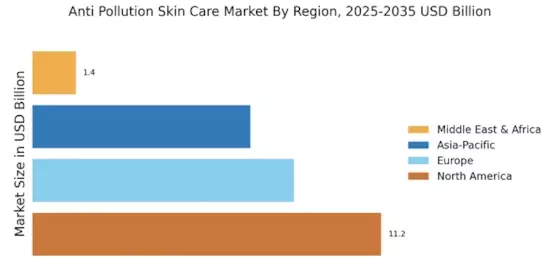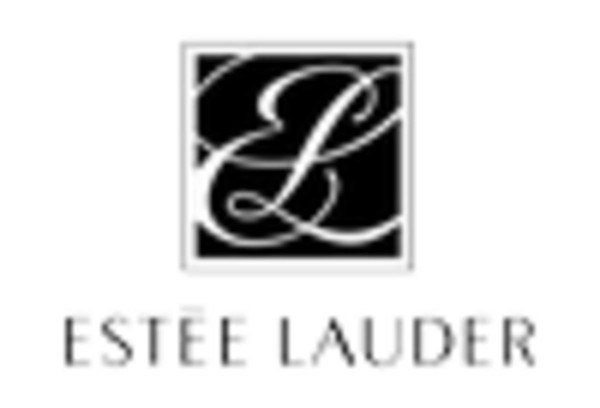The Anti Pollution Skin Care Market is currently characterized by a dynamic competitive landscape, driven by increasing consumer awareness regarding the adverse effects of environmental pollutants on skin health. Major players such as L'Oreal (FR), Estée Lauder (US), and Unilever (GB) are strategically positioning themselves through innovation and sustainability initiatives. L'Oreal (FR) has been particularly focused on integrating advanced technologies into their product lines, emphasizing the development of formulations that combat urban pollution. Meanwhile, Estée Lauder (US) has been enhancing its digital presence, leveraging e-commerce platforms to reach a broader audience, which appears to be a critical factor in their growth strategy. Unilever (GB) is also making strides in sustainability, with a commitment to reducing plastic waste in packaging, thereby appealing to environmentally conscious consumers. Collectively, these strategies not only enhance brand loyalty but also intensify competition within the market.
In terms of business tactics, companies are increasingly localizing manufacturing to reduce supply chain vulnerabilities and optimize costs. This approach is particularly relevant in the context of fluctuating global trade dynamics. The market structure is moderately fragmented, with a mix of established brands and emerging players vying for market share. The collective influence of key players like Shiseido (JP) and Neutrogena (US) further complicates the competitive environment, as they introduce innovative products that cater to specific consumer needs, thereby shaping market trends.
In August 2025, L'Oreal (FR) launched a new line of anti-pollution skincare products that utilize bioengineered ingredients aimed at neutralizing urban pollutants. This strategic move not only reinforces L'Oreal's commitment to innovation but also positions the brand as a leader in the anti-pollution segment, potentially attracting a new demographic of health-conscious consumers. The introduction of these products is likely to enhance their market share and solidify their competitive edge.
In September 2025, Estée Lauder (US) announced a partnership with a tech startup specializing in AI-driven skincare diagnostics. This collaboration aims to personalize skincare routines based on individual skin conditions exacerbated by pollution. By integrating technology into their offerings, Estée Lauder is not only enhancing customer engagement but also setting a precedent for future innovations in the skincare industry. This strategic alliance could significantly influence consumer purchasing behavior, as personalized solutions become increasingly sought after.
In July 2025, Unilever (GB) unveiled its new sustainability initiative, which includes a pledge to achieve carbon neutrality across its product lines by 2030. This commitment is indicative of a broader trend within the industry, where sustainability is becoming a key differentiator. Unilever's proactive approach may resonate well with consumers who prioritize eco-friendly products, thereby enhancing brand loyalty and market positioning.
As of October 2025, the competitive trends within the Anti Pollution Skin Care Market are increasingly defined by digitalization, sustainability, and the integration of artificial intelligence. Strategic alliances are playing a pivotal role in shaping the landscape, as companies seek to leverage each other's strengths to enhance product offerings. Looking ahead, it appears that competitive differentiation will increasingly pivot from price-based strategies to innovation, technological advancements, and supply chain reliability, reflecting a significant shift in consumer expectations and market dynamics.


















Leave a Comment